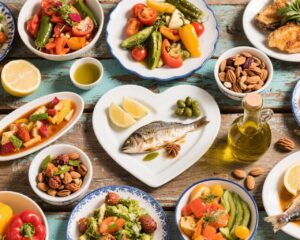Introduction: Understanding the Context
Milk is a staple in many diets worldwide, celebrated for its rich nutrients including high-quality protein and calcium essential for bone health. However, recent headlines reporting a Harvard study suggesting that drinking more than 3.5 cups of milk per week may increase the risk of liver cancer by 45% have caused alarm and confusion among the public. This has led many regular milk consumers to question the safety of their dietary habits.
Is milk truly a cancer risk? Or is this another case of statistics getting misinterpreted in public discourse? This article aims to clarify the scientific findings, address misconceptions, and provide practical advice on milk consumption grounded in evidence.
Scientific and Clinical Evidence: What the Data Really Tell Us
In April 2025, researchers from Harvard University published a large prospective cohort study in The American Journal of Clinical Nutrition[1], involving approximately 480,000 participants aged 50 to 71 years, followed over a median period of 15.5 years. The study investigated the relationship between dairy product intake and the incidence of chronic liver disease (CLD) mortality and liver cancer, specifically hepatocellular carcinoma (HCC), the most common type of primary liver cancer.
Participants reported their dairy consumption, categorized into high-fat and low-fat products. Key findings included:
– High milk consumption (>3.5 cups or 840 mL per week) was statistically associated with a 45% increase in risk of HCC.
– Extremely high consumption (>14 cups or 3,360 mL per week) correlated with a 61% increased HCC risk.
– High-fat dairy intake was positively associated with higher CLD mortality rates.
– Conversely, low-fat dairy products and yogurt demonstrated a protective association against CLD death.
However, it is critical to emphasize that these are observational correlations. The study does not establish causation—that drinking milk causes liver cancer. Instead, it identifies statistical trends warranting further investigation.
Limitations of Observational Studies: Correlation Does Not Mean Causation
Observational epidemiological studies, while invaluable for identifying potential risk factors, cannot prove direct cause-effect relationships due to inherent limitations, including:
– Confounding factors: For example, those who drink more milk might also have other lifestyle factors influencing liver cancer risk, such as alcohol consumption or obesity.
– Reverse causation or measurement errors in dietary reporting.
– Population differences: Data derived from a mostly American cohort may not fully translate to different ethnic, genetic, or dietary contexts like those in China.
Researchers acknowledge these limitations and underscore the need for further controlled studies to explore mechanisms and causality.
Current Known Risk Factors for Liver Cancer
Known, well-established risk factors for liver cancer include chronic infection with hepatitis B or C viruses, excessive alcohol intake, exposure to aflatoxins (toxins from certain molds), non-alcoholic fatty liver disease, obesity, and metabolic syndrome. Milk consumption is not identified by authoritative bodies as a risk factor.
Misconceptions and Public Reaction: Separating Fact from Fiction
The viral news headline “Milk leads to 45% higher liver cancer risk” oversimplifies and exaggerates the research findings, leading to public fear and confusion. Some common misconceptions include:
– Assuming any positive statistical association equals definitive proof of harm.
– Ignoring the dose: The increased risk was linked to consuming very large quantities of milk, well beyond typical daily recommendations.
– Overlooking that low-fat dairy and yogurt may have protective effects.
Such misinformation can cause unnecessary anxiety and may lead some to reduce or eliminate milk, potentially risking nutritional deficiency, especially calcium and protein shortages.
How to Consume Milk Healthily: Practical Guidance
The Chinese Dietary Guidelines recommend daily milk consumption of 300–500 mL or equivalent dairy products to ensure adequate nutrient intake. For most individuals, especially those under-consuming milk, meeting rather than exceeding this recommendation is the priority.
For those concerned about liver health or high milk intake:
– Prefer low-fat or fat-free milk and yogurt, which may carry less risk and provide beneficial probiotics.
– Individuals consuming >500 mL daily, or those with metabolic or liver conditions, should consider moderation and consult healthcare providers.
– For lactose-intolerant individuals, lactose-free milk products with added lactase enzyme can prevent digestive discomfort.
| Category | Characteristics | Schematic Risk Association |
|---|---|---|
| High-Fat Dairy Products | Whole milk, regular cheese, cream, butter, ice cream | Positive correlation with increased chronic liver disease mortality in study |
| Low-Fat Dairy Products | Low-fat/skim milk, low-fat cheese, yogurt, frozen yogurt | Protective association against chronic liver disease mortality |
Expert Insights
Dr. Emily Harper, a nutrition epidemiologist, explains: “This study highlights intriguing correlations but does not mean drinking milk causes liver cancer. Milk remains a valuable source of nutrients, and individuals should follow existing dietary guidelines rather than dramatize isolated findings.”
Meanwhile, liver specialist Dr. Robert Chang advises focusing on established liver cancer risk factors: “Vaccination against hepatitis B, minimizing alcohol intake, healthy weight maintenance, and avoiding aflatoxin exposure remain the cornerstone of liver cancer prevention.”
Patient Scenario: John’s Concerns Over Milk and Liver Cancer
John, a 55-year-old man with no history of liver disease, drinks about 1.5 cups of whole milk daily. After reading alarming headlines, he questions whether he should quit milk entirely.
Discussion with his doctor clarifies that his milk intake is moderate and not linked to significant liver cancer risk. His doctor recommends continuing moderate consumption, preferably switching to low-fat milk, and focusing on maintaining a balanced diet and healthy lifestyle.
Conclusion: Balanced View on Milk and Liver Health
The recent Harvard study adds valuable data on dairy intake and liver disease risk, yet it does not provide definitive evidence that milk causes liver cancer. Current evidence supports that moderate milk consumption aligns with a healthy diet and offers nutritional benefits outweighing hypothetical risks.
Public health efforts should emphasize well-known liver cancer risk factors while encouraging milk consumption according to dietary guidelines to prevent nutritional deficiencies. Scientific literacy and critical interpretation of emerging studies are essential to avoid unwarranted alarm.
References
[1] Liu, X., Zhang, X., Zhao, L., Petrick, J. L., Liao, L. M., Wang, W., He, N., Giovannucci, E., Zhang, Z. F., McGlynn, K. A., & Zhang, X. (2025). The associations between dairy intake and chronic liver disease mortality and liver cancer incidence: a prospective cohort study. The American Journal of Clinical Nutrition, 122(1), 263–273. https://doi.org/10.1016/j.ajcnut.2025.04.028
[2] Chinese Nutrition Society. Dietary Guidelines for Chinese Residents (2022 Edition).
[3] World Health Organization. Liver cancer: Key facts and prevention. https://www.who.int/news-room/fact-sheets/detail/liver-cancer
[4] Sciencedirect. Dairy intake and liver disease. https://www.sciencedirect.com/science/article/pii/S0002916523048864
[5] U.S. FDA. Product Safety: Bovine Somatotropin (BST). https://www.fda.gov/animal-veterinary/product-safety-information/bovine-somatotropin-bst
[6] Ministry of Agriculture of the People’s Republic of China. Notifications on Dairy Safety. https://www.moa.gov.cn/gk/tzgg_1/bl/201812/t20181214_6164972.htm



